Picabia I See Again in Memory

Francis Picabia I See Again in Memory My Dearest Udnie Paris, June - July 1914
Effectually 1914 Picabia began to pilfer words and phrases from the encyclopedic Petit Larousse dictionary for use in his own works. He based this painting'south title on a line from Virgil's Aeneid from that source—"Dying, he saw again in retention his dear Argos"—substituting "Udnie," a proper name of Picabia'southward ain invention. The artist associated the proper noun with his memories of French dancer Stacia Napierkowska rehearsing onboard during his transatlantic journey to New York in 1913. "Udnie" is also an anagram of the final name of French musicologist Jean d'Udine, whose theory of synesthesia (published in 1910) linked painting with music and trip the light fantastic toe through the concept of rhythm.
In this big painting, rhythm is intimated via a serial of repeated, interpenetrating pistons and orifices, fusing the mechanical with the biological. The work illustrates Picabia'southward predilection for machines, which intensified during his 1913 visit to New York. As ane reviewer noted that year, "Picabia . . . admits to having put all erstwhile things behind him and to having grasped the genius of American machinery equally the new medium through which his art may be expressed." The painting's conflation of mechanized movements with erotic bodily forms, along with its half-stolen title, exemplifies the irreverent approach that made Picabia a central figure in the Dada movement during the World War I years.
Publication extract from MoMA Highlights: 375 Works from The Museum of Modern Fine art, New York (New York: The Museum of Modern Art, 2019)
When Picabia painted this work, in Paris in 1914, he had recently returned from a trip to New York. Aboard the steamship that had taken him there, Picabia had been captivated by the movement of Stacia Napierkowska, a Polish dancer en route to a bout of American music halls. Over the next two years, Picabia produced several monumental canvases that he said were inspired past his memories of Napierkowska, and also, he said, "of America, evocations from there which, subtly opposed like musical harmonies, become representative of an idea, of a nostalgia, of a fugitive impression." In this painting, rather than representing the dancer herself, Picabia creates a visual analogy for the lingering awareness of this sensuous meet: segmented tubes and curling organic forms fill up the vertical centrality of the sail in a slow upward screw.
Gallery label from Inventing Abstraction, 1910–1925, Dec 23, 2012–April fifteen, 2013.
Effectually 1914, Picabia began to pilfer words and phrases from the encyclopedic French dictionary Petit Larousse for use in his own works. He based this painting'south title on a line from Virgil's Aeneid published in that source—"Dying, he saw again in memory his dear Argos"—but substituted "Udnie," a name of his own invention. Picabia associated "Udnie" with memories of watching the dancer Stacia Napierkowska, whose suggestive performances subsequently provoked her arrest, rehearse onboard during his transatlantic journey to New York in 1913. "Udnie" is likewise an anagram of the concluding proper name of Jean d'Udine, whose theory of synesthesia (published in 1910) linked painting with music and dance through the concept of
rhythm. In this painting, rhythm is intimated via a series of repeated, interpenetrating pistons and quasi-visceral orifices, fusing the mechanical with the biological.
Gallery label from Francis Picabia: Our Heads are Round and then Our Thoughts Tin Alter Direction, 2016.
- Medium
- Oil on canvas
- Dimensions
- eight' 2 ane/2" x 6' 6 i/4" (250.ii ten 198.viii cm)
- Credit
- Hillman Periodicals Fund
- Object number
- four.1954
- Copyright
- © 2022 Artists Rights Guild (ARS), New York / ADAGP, Paris
- Department
- Painting and Sculpture
We take identified these works in the post-obit photos from our exhibition history.
-
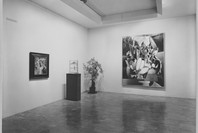
XXVth Ceremony Exhibition: Paintings from the Museum Collection
Oct 19, 1954–Feb half-dozen, 1955
1 other work identified
-
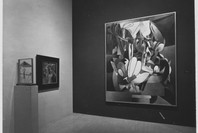
Fine art in a Changing World: 1884–1964: Painting and Sculpture from the Museum Drove
May 27, 1964
-
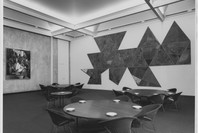
Jasper Johns: Map
Oct 6, 1971–Feb 13, 1972
-
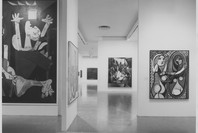
Permanent Drove
Mar 29, 1972–Apr 21, 1980
ane other piece of work identified
-
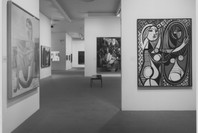
Permanent Collection
Mar 29, 1972–Apr 21, 1980
1 other work identified
-
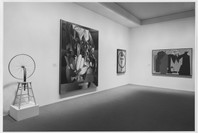
Selections from the Permanent Collection: Painting and Sculpture
May 17, 1984–Aug 4, 1992
2 other works identified
-
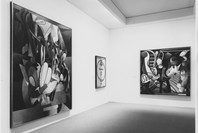
Selections from the Permanent Collection: Painting and Sculpture
May 17, 1984–Aug 4, 1992
one other work identified
-
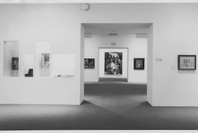
Selections from the Permanent Drove: Painting and Sculpture
May 17, 1984–Aug four, 1992
iii other works identified
-
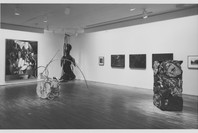
Selections From The Collection (1992)
Sep 9, 1992–Feb 21, 1993
-
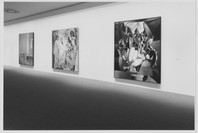
MoMA2000, ModernStarts: People, Composing with the Figure
October vii, 1999–Feb 1, 2000
1 other work identified
-
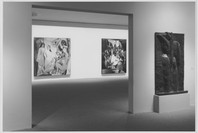
MoMA2000, ModernStarts: People, Composing with the Figure
Oct 7, 1999–Feb ane, 2000
one other work identified
-
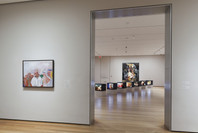
Sturtevant: Double Problem
Nov 9, 2014–Feb 22, 2015
i other piece of work identified
-
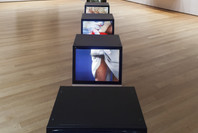
Sturtevant: Double Trouble
Nov 9, 2014–Feb 22, 2015
-
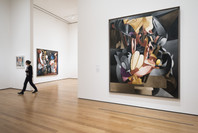
Francis Picabia: Our Heads Are Round so Our Thoughts Tin can Change Management
Nov 21, 2016–Mar nineteen, 2017
1 other work identified
-

Francis Picabia: Our Heads Are Round so Our Thoughts Tin Alter Management
Nov 21, 2016–Mar 19, 2017
i other piece of work identified
-
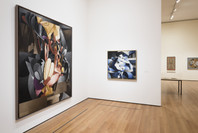
Francis Picabia: Our Heads Are Round so Our Thoughts Can Change Direction
Nov 21, 2016–Mar 19, 2017
-
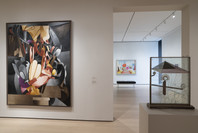
508: Readymade in Paris and New York
Fall 2019–Fall 2020
2 other works identified
-
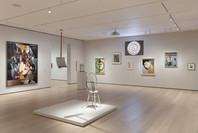
508: Readymade in Paris and New York
Fall 2019–Fall 2020
ten other works identified
-
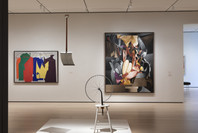
508: Readymade in Paris and New York
Autumn 2019–Fall 2020
3 other works identified
-
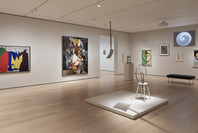
508: Readymade in Paris and New York
Fall 2019–Fall 2020
9 other works identified
-
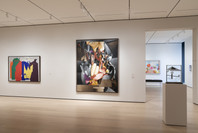
508: Readymade in Paris and New York
Fall 2019–Autumn 2020
three other works identified
-
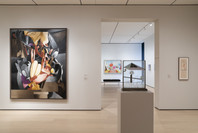
508: Readymade in Paris and New York
Fall 2019–Fall 2020
two other works identified
-
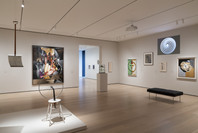
508: According to the Laws of Chance
Ongoing
eight other works identified
-

508: According to the Laws of Chance
Ongoing
ane other work identified
In 2018–19, MoMA collaborated with Google Arts & Culture Lab on a projection using machine learning to identify artworks in installation photos. That project has concluded, and works are now beingness identified by MoMA staff.
If you observe an error, please contact us at [email protected].
This piece of work is included in the Provenance Inquiry Project, which investigates the ownership history of works in MoMA's drove.
1913/fourteen - at to the lowest degree 1930, Francis Picabia, Paris.1930 (?) - 1947, Galerie L'Attempt Moderne/ Léonce Rosenberg (1879-1947), Paris.
1947 - ?, Léonce Rosenberg Estate, Paris.
? - 1954, Sidney Janis Gallery, New York, purchased from the Léonce Rosenberg Estate.
1954, The Museum of Modernistic Fine art, New York, purchased from Sidney Janis Gallery, New York.
Provenance inquiry is a work in progress, and is oft updated with new information. If you have whatever questions or data to provide almost the listed works, please email [email protected] or write to:
Provenance Enquiry Project
The Museum of Modern Art
11 West 53 Street
New York, NY 10019
If you lot would like to reproduce an prototype of a work of art in MoMA'southward collection, or an image of a MoMA publication or archival material (including installation views, checklists, and press releases), please contact Art Resource (publication in North America) or Scala Archives (publication in all other geographic locations).
MoMA licenses archival audio and select out of copyright film clips from our pic collection. At this time, MoMA produced video cannot exist licensed by MoMA/Scala. All requests to license archival audio or out of copyright film clips should be addressed to Scala Athenaeum at [email protected]. Moving picture flick stills cannot be licensed past MoMA/Scala. For admission to motility picture film stills for inquiry purposes, please contact the Picture Written report Eye at [electronic mail protected]. For more data near motion-picture show loans and our Circulating Picture and Video Library, please visit https://www.moma.org/research-and-learning/circulating-film.
If you would like to reproduce text from a MoMA publication, please email [e-mail protected]. If yous would like to publish text from MoMA's archival materials, please fill out this permission course and ship to [email protected].
This record is a work in progress. If you have additional data or spotted an error, please transport feedback to [email protected].
Source: https://www.moma.org/collection/works/78348
0 Response to "Picabia I See Again in Memory"
Post a Comment